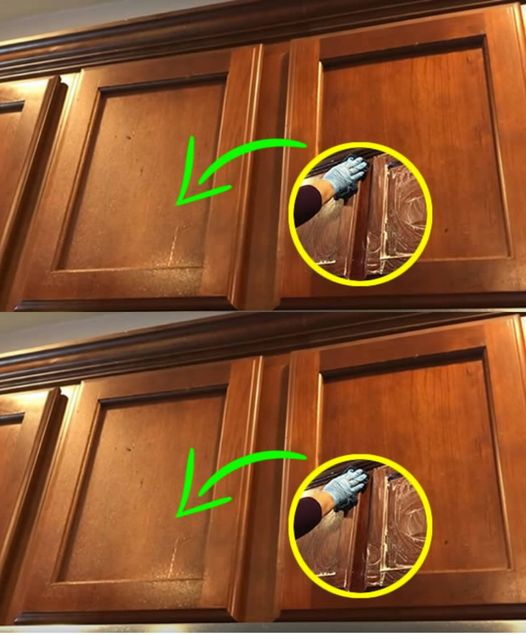ADVERTISEMENT
Baking soda
Vegetable oil (any kind you have on hand will do)
A soft cloth or sponge
A bowl
Warm water
Steps:
Create the Cleaning Paste: In a small bowl, mix together one part baking soda with one part vegetable oil. You don’t need a lot; start with a tablespoon of each, depending on the size of the area you need to clean. Stir the mixture until it forms a thick paste.
Apply the Paste: Dip a soft cloth or sponge into the paste. Then, gently apply it to the greasy areas on your cabinets. You don’t need to press hard; just make sure the paste covers all the greasy spots.
Let it Sit: Allow the paste to sit on the cabinets for about 5-10 minutes. This gives the mixture time to break down the grease and grime effectively.
Wipe Away the Grease: After letting the paste sit, take a clean cloth or sponge dampened with warm water and gently wipe away the paste. You’ll notice that the grease and grime come off easily, leaving behind a clean, smooth surface.
Rinse and Repeat (If Necessary): If you still see some grease residue, repeat the process until your cabinets are completely clean. For most, one application is enough, but particularly stubborn grime might need a second round.
Final Rinse and Dry: Once you’ve removed all the grease, wipe down the cabinets with another clean cloth dampened with warm water to remove any remaining residue. Finally, dry the surface with a dry cloth to prevent any water spots.
Additional Tips for Maintaining Grease-Free Cabinets
Regular Cleaning: To prevent grease buildup, make it a habit to wipe down your cabinets with a damp cloth regularly, especially after cooking. This routine maintenance will help keep your cabinets clean and reduce the need for deep cleaning.
Use a Grease Filter: If you do a lot of frying or high-heat cooking, consider using a grease filter in your kitchen. These filters can help trap some of the airborne grease particles before they settle on your cabinets.
Avoid Harsh Chemicals: Stick to natural cleaning solutions like the baking soda and vegetable oil mixture or other gentle cleaners. Harsh chemicals can damage your cabinets’ finish and pose health risks.
Consider Cabinet Material: Different cabinet materials might require different care. For instance, wooden cabinets might benefit from a gentle wood cleaner or polish after using the baking soda and oil method.
My aunt’s trick of using baking soda and vegetable oil to clean greasy kitchen cabinets is a game-changer. Not only is it incredibly effective, but it also requires almost no effort and uses ingredients you likely already have in your pantry. The next time you notice a greasy film on your cabinets, skip the harsh chemicals and give this simple solution a try. You’ll be amazed at how easy it is to restore your cabinets to their original glory!
ADVERTISEMENT
